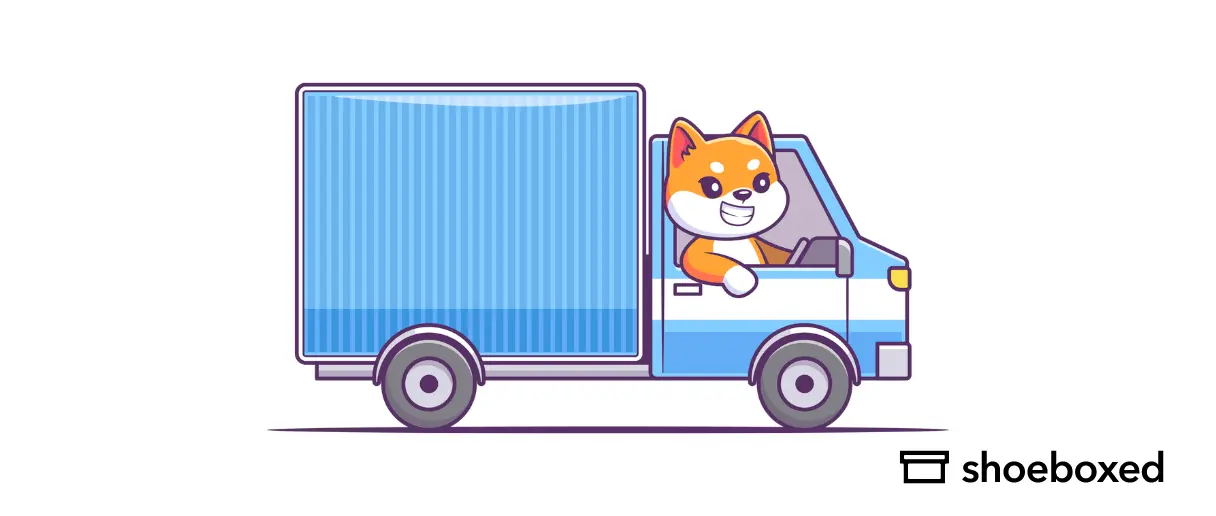Starting a truck dispatching business can be a rewarding career choice for those interested in the transportation industry.
When you become a truck dispatcher, you’ll play a vital role in coordinating the movement of freight and cargo loads, ensuring timely deliveries, and maintaining open communication with truck drivers and clients.
With the right combination of education, experience, and business acumen, you can build a successful truck dispatcher business and provide valuable services to both truck drivers and freight brokers.
Is truck dispatching profitable?
While profitability can vary depending on several factors such as experience, location, and the number of clients you serve, truck dispatching can be a lucrative career choice.
Independent truck dispatchers typically earn a percentage of the revenue generated from each load they coordinate.
This percentage can range from 5% to 10% or even higher in some cases.
The more loads a truck dispatcher handles and the higher the revenue generated from these loads, the more money they make.
How do I start independent dispatching?

Learn how to get started as an independent truck dispatcher.
While any profession requires hard work and dedication to master, starting your independent truck dispatching business doesn’t have to be complicated.
Follow the steps below to start independent dispatching:
Step 1. Get the training you need
Hopping onto a career path without knowing anything about the position is a recipe for disaster.
It’s a good idea to pursue initial training for truck dispatchers through online courses or on-site training programs before starting your business.
Some of the best programs include:
These courses can help you learn the ropes of dispatching, improve your communication skills, develop effective negotiation techniques, and learn how to provide excellent customer service.
Step 2. Choose a business structure
When starting a truck dispatching company, you need to choose the right business structure.
The most common options are sole proprietorship, partnership, LLC, or corporation.
Each structure has its own advantages and disadvantages, so it’s important to research and choose the one that best fits your needs.
Here’s a brief overview:
Sole Proprietorship: Simple structure, easy to set up, you as the owner are personally responsible for all business liabilities.
Partnership: Requires at least two partners, shared responsibilities and profits, each partner is personally liable for business debts.
LLC: Offers limited liability protection, provides tax flexibility, easy to manage.
Corporation: Provides the most liability protection, more complex to set up and maintain, subject to double taxation.
Becoming an LLC is the most popular option and can typically be done online for a couple of hundred dollars.
a. Obtaining an Employer Identification Number
After deciding on your business structure, you should apply for an Employer Identification Number (EIN) from the IRS.
This number is crucial for filing taxes, opening a business bank account, and recruiting employees.
The application process for an EIN is straightforward and can be completed online for free.
b. Understanding liability
Your business structure will determine your liability exposure in the truck dispatching business.
Understanding potential risks and liabilities is essential for protecting your personal assets and the company’s financial stability.
Sole proprietorships and partnerships have higher personal liability exposure, while LLCs and corporations offer better liability protection.
For example, an LLC (limited liability company) protects your personal assets by separating them from your business assets in case of legal or financial issues.
A sole proprietorship doesn’t offer these protections.
Key takeaways: Carefully consider your business structure, obtain an EIN, and ensure you have a thorough understanding of liability and protection for a successful and secure truck dispatching business.
Step 3. Obtain insurance and licensing

You’ll need to ensure that your business complies with local, federal, and FMCSA regulations.
Starting a truck dispatching business requires understanding and complying with various operating requirements and regulations.
In this section, we’ll discuss the necessary permits and how to ensure compliance with the Federal Motor Carrier Safety Administration (FMCSA) regulations.
a. Acquiring necessary permits
After registering your business as an LLC (or another appropriate business structure) and obtaining an EIN for taxes, you’ll need to check with your local government.
Depending on your location, you may also need specific licenses and permits from local authorities.
Research your local regulations, and consult with the relevant authorities to ensure your truck dispatching company is legally compliant.
b. Compliance with FMCSA regulations
The FMCSA is responsible for overseeing the trucking industry and ensuring safety standards are met.
As a truck dispatcher or freight broker, you’ll need to be familiar with these regulations and ensure that all truck drivers and owner-operators you work with are compliant.
Load boards can be useful tools in staying compliant with FMCSA regulations, as they allow you to find relevant loads and routes for your truck drivers.
Ensuring timely delivery of cargo loads and adhering to transportation routes is essential to maintaining a good standing with the FMCSA.
Make sure to communicate clearly with truck drivers and freight dispatchers about FMCSA regulations.
Key takeaways: Acquiring the proper permits and licenses, along with ensuring compliance with FMCSA regulations, will help your truck dispatching company succeed.
Step 4. Do market and competitor research
To start a successful truck dispatching business, it’s crucial to define your target market.
Research the trucking industry and identify potential customers, such as owner-operators, small trucking companies, and local businesses that depend on freight transportation.
Understanding your target market will help you tailor your services and sales pitch to potential clients, increasing your chances of success.
You’ll also want to do research on your competitors. Find out how much they’re charging and the services they offer to see where you can outperform your local competition.
Step 5. Evaluate initial start-up costs and financial projections
a. Start-up costs
As you build your business plan, it’s essential to evaluate the initial start-up costs for your truck dispatching company.
These costs typically include:
Office space or home office setup.
Computer, printer, phone, and office supplies.
Transportation Management Software (TMS) and load board subscriptions.
Marketing and advertising expenses.
By identifying your start-up costs, you can prepare a realistic budget and determine the necessary capital to launch your business.
b. Financial projections
Creating financial projections for your truck dispatching business is an essential step in your business plan.
To make accurate and realistic projections, consider the following factors:
The number of trucks you plan to dispatch.
Your expected revenue per truck, based on factors such as cargo loads, transport routes, and customer contracts.
Your average salary as an independent truck dispatcher.
Operating costs, such as TMS subscription fees, phone bills, computer maintenance, and your marketing budget.
Once you’ve gathered the necessary data, create a financial forecast for your first year, as well as 3-year and 5-year projections.
These financial projections will help you understand the financial viability of your business and determine the necessary growth to achieve profitability.
Key takeaways: Focus on your target market, evaluate start-up costs, and create realistic financial projections to give your business the best chance for success.
Step 6. Purchase dispatcher software
Choosing the right dispatcher software is a crucial step in starting your truck dispatching business.
These tools help you streamline operations, manage truck drivers, and maintain a strong relationship with your clients.
When choosing a dispatcher software, you’ll want to consider the following features:
Real-time route planning, tracking, load management, and communication with drivers. This allows you to make informed decisions, leading to timely delivery of cargo and satisfied clients.
User-friendliness. The more intuitive and easy-to-use the software is, the more efficiently you can manage your trucks and the loads they carry.
Pricing. As a new business owner, you want to keep your owner-operator expenses low while providing the best service possible. Look for flexible pricing plans and choose a package that suits your budget. Free trials also let you test out the software before committing.
Support and training resources. Choose trucker software that offers comprehensive tutorials and customer support to help you quickly resolve any issues that might arise.
By incorporating these factors into your decision-making process, you’ll be better prepared to find the right dispatcher software for your truck dispatching company.
Keep reading to find out which dispatching software is our favorite!
Step 7. Market your dispatching business

Create an online presence to establish your authority in the industry.
a. Create an online presence
To be successful in any industry, it’s crucial to establish a strong online presence.
Create a professional website for your business where potential customers can learn about your services, your experience in the trucking industry, and any freight dispatcher certifications you may have.
Make sure your website is easy to navigate and showcases your customer service experience.
You’ll also want to develop a solid social media presence to connect with potential customers and industry peers.
Platforms like LinkedIn, Facebook, Twitter, and even YouTube can be great places to share informative content about the transportation industry.
Engaging with your online audience regularly helps build trust and keeps you at the forefront of customers’ minds when they need truck dispatching services.
b. Develop a marketing plan
You’ll need a strong marketing plan to attract and retain customers.
Start by identifying your target audience such as truck drivers, owner-operators, small trucking companies, or freight brokers.
Focus on the unique selling points of your truck dispatching business.
These may include:
Efficient communication skills.
Extensive knowledge of transport routes.
Experience in conducting negotiations to secure the best loads and rates.
Load boards, like DAT or Convoy, are an essential tool for truck dispatchers to source potential clients and find loads.
You can also connect with potential customers by reaching out to local businesses.
Be sure to develop a compelling sales pitch that clearly communicates the advantages of partnering with your truck dispatching company.
Step 8. Build relationships with shippers and carriers
As a truck dispatcher, building relationships with shippers and carriers is key.
This section will cover finding shippers and connecting with carriers to help get your name out there.
a. How to find shippers
There are a few ways to find shippers, but we recommend starting by finding manufacturers and suppliers in your area.
Create a list of potential clients, and reach out to them with a polished sales pitch that highlights your experience and skills in the trucking industry.
You can also do the following:
Attend industry events. Trade shows and conferences offer opportunities to meet shippers and other key players in the transportation industry. Here, you can network, learn about industry trends, and showcase your dispatch services.
Use online job boards and social media platforms to search for shippers looking for truck dispatchers.
Follow industry-specific groups and pages and actively participate in discussions to demonstrate your knowledge and gain visibility.
b. Connecting with carriers
To build relationships with carriers, you can:
Attend trucking industry events. Meet truck drivers, owner-operators, and representatives from trucking companies.
Use load boards and online forums to find carriers that are in need of truck dispatchers.
Make connections and exchange contact information to build a network of carriers you can rely on.
Becoming a dispatcher | Truck Dispatcher Training
See also: How to Start Owner Operator Trucking Business in 4 Steps
Tools for a successful truck dispatching business
Software and the right tools can help you manage your fleets and automate back-office tasks.
Here’s a quick rundown of our favorite software for truck-dispatching businesses:
1. Shoeboxed – Best for receipt management
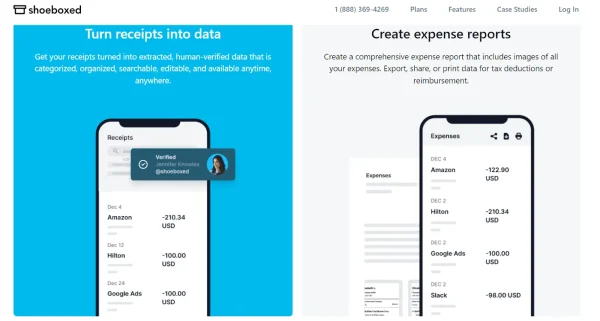
Manage your receipts with the Shoeboxed app.
Shoeboxed is a receipt-scanning app and service that lets you snap photos of, categorize, and create expense reports for receipts on the go.
The app creates digital copies of your expenses so you never have to worry about losing another receipt and always have an accurate record of business purchases.
In fact, Shoeboxed is already used and trusted by truckers all over the country for those very reasons!
So, what are Shoeboxed’s other features, and how can they help truck dispatchers?
a. The Magic Envelope
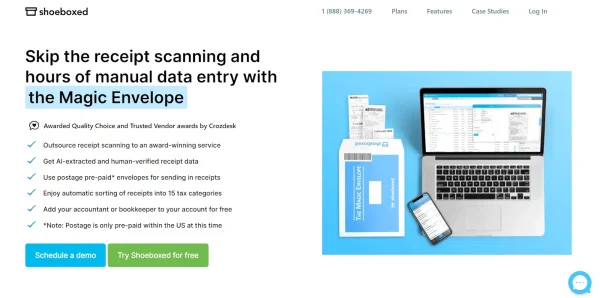
Outsource your receipt scanning with the Magic Envelope service.
Shoeboxed offers a mail-in receipt scanning service called the Magic Envelope that offers dispatchers a “set and forget” solution for receipt management.
When you sign up for Shoeboxed online, you’ll receive a postage-pre-paid Magic Envelope to stuff receipts inside and mail out at the end of the month.
Once your receipts reach the Shoeboxed facility, they’re scanned, human-verified for accuracy, and uploaded to your account under 15 editable tax categories.
Let Shoeboxed do the scanning for you. They will scan your receipts and other important documents with The Magic Envelope.
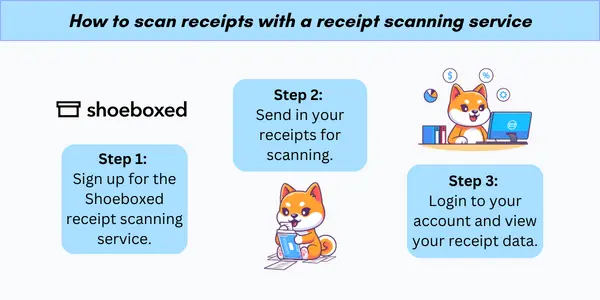
Shoeboxed is the only receipt scanner app that will handle both your paper receipts and your digital receipts—saving customers up to 9.2 hours per week from manual data entry!
Break free from paper clutter ✨
Use Shoeboxed’s Magic Envelope to ship off your receipts and get them back as scanned data in a private, secure cloud-based account. 📁 Try free for 30 days!
Get Started Todayb. Expense reports
Once your receipts are added to your account, you can create a detailed expense report at the end of the year to send to your accountant.
Expense reports come with images of receipts attached as proof of purchase.
c. Accounting software integrations
Shoeboxed integrates with QuickBooks, Xero, and Wave to make accounting for truckers and those in the trucking industry a breeze
Effortlessly transfer and organize your receipts in your accounting software for tax prep and filing.
Pros:
Used and trusted by those in the trucking industry.
Offers custom plans so you can get a tailor-made solution for your business (contact customer support).
Use the Magic Envelope to outsource your receipt scanning and expense management.
Built-in mileage tracker that includes miles in expense reports.
If you employ truckers, add them to your account to track employee expenses.
Add an unlimited number of users to a single account for FREE.
Scan receipts on the go with the Shoeboxed app. You’ll never lose another receipt!
Not just for receipts. Scan copies of other business-related documents for safekeeping.
Integrates with software, such as QuickBooks, for tax reporting and accounting purposes.
Cons:
Plans that include the Magic Envelope are only available for purchase online.
Pricing:
Plans that include the Magic Envelope start at $18/month, up to $54/month. Plans that include the Magic Envelope are available for purchase on desktop only.
30-day free trial.
Turn receipts into data for tax time ✨
Try Shoeboxed’s systematic award-winning approach to receipt tracking for tax season. Try free for 30 days!
Get Started Today2. Fleetio – Best modern dispatching features

Fleetio for truck dispatching.
Fleetio “…Builds software to help fleets of all sizes manage and maintain their fleet from anywhere, improve ROI and profitability, all at an affordable price.”
This software is a comprehensive fleet management platform that can help you streamline your truck dispatching business.
With Fleetio, you can track all aspects of your fleet operations, including vehicle maintenance, fuel consumption, and driver performance.
This valuable information will enable you to make data-driven decisions to improve efficiency, reduce costs, and maintain a high level of service for your customers.
Fleetio also offers a mobile app, making it easy for you to manage your fleet on the go.
Pros:
Effectively collaborate with everyone on your team.
An unlimited number of users.
Web access and mobile app.
Automated processes reduce the need for manual data entry.
Trusted by Subaru, 1-800-GOT-JUNK, and other big names.
Cons:
Pricing isn’t transparent.
Pricing:
Book a demo for pricing information.
3. Q7 – Best end-to-end software
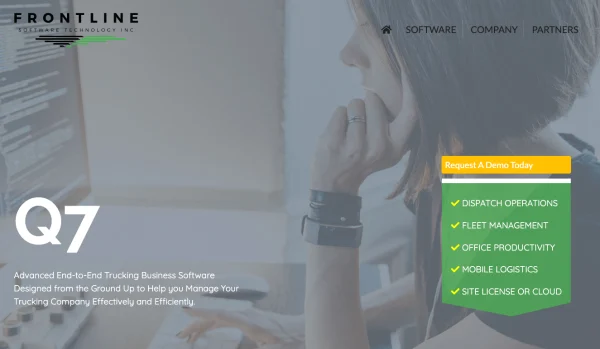
Q7 is the best all-in-one software solution for the trucking industry.
Q7 is a powerful trucking management software that can help you take control of your truck dispatching business.
Some of its many features include load management, dispatching, billing, and accounting. Q7 can help you streamline your operations, increase efficiency, and ultimately improve your bottom line.
Additionally, Q7 offers integrations with popular load boards, giving you access to a wide range of loads for your truck drivers and helping to grow your business.
Pros:
End-to-end trucking industry software.
Mobile app and web dashboard.
Safety, billing, accounting, dispatch, trucking payroll software, and more.
Cons:
The software is pretty dated compared to other options.
Can be complex to use. You’ll likely need to reference Q7 materials to learn the ropes.
Pricing isn’t transparent.
Pricing:
Request a demo for pricing.
Hit the road with Shoeboxed ⛟
Stuff receipts into the Magic Envelope while on the road. Then send them in once a month to get scanned. Expense reports don’t get easier than this! 💪🏼 Try free for 30 days!
Get Started TodayFrequently asked questions
How do I start independent dispatching?
To start independent dispatching, you need to have a solid understanding of the trucking industry and develop strong communication skills. Gain experience by working with a trucking company or taking online courses to enhance your knowledge. Then, set up your business structure, such as a limited liability company, and establish your services and fees.
How many trucks can one dispatcher handle?
On average, a dispatcher can manage anywhere between 30 to 50 trucks. That said, the number of trucks a dispatcher can handle varies depending on their experience, efficiency, and the complexity of the loads and transport routes.
In conclusion
Starting a truck dispatching business requires dedication, industry knowledge, and effective marketing strategies.
As an aspiring truck dispatcher, it’s essential to gain experience in the trucking industry, familiarize yourself with load boards, and establish connections with truck drivers and trucking companies.
Pursuing relevant education, such as online courses or obtaining an associate’s or bachelor’s degree, can further enhance your skills in the transportation industry.
Hannah DeMoss is a staff writer for Shoeboxed covering organization and digitization tips for small business owners. Her favorite organization hack is labeling everything in her kitchen cabinets, and she can’t live without her mini label maker machine.
About Shoeboxed!
Shoeboxed is a receipt scanning service with receipt management software that supports multiple methods for receipt capture: send, scan, upload, forward, and more!
You can stuff your receipts into one of our Magic Envelopes (prepaid postage within the US). Use our receipt tracker + receipt scanner app (iPhone, iPad and Android) to snap a picture while on the go. Auto-import receipts from Gmail. Or forward a receipt to your designated Shoeboxed email address.
Turn your receipts into data and deductibles with our expense reports that include IRS-accepted receipt images.
Join over 1 million businesses scanning & organizing receipts, creating expense reports and more—with Shoeboxed.
Try Shoeboxed today!



